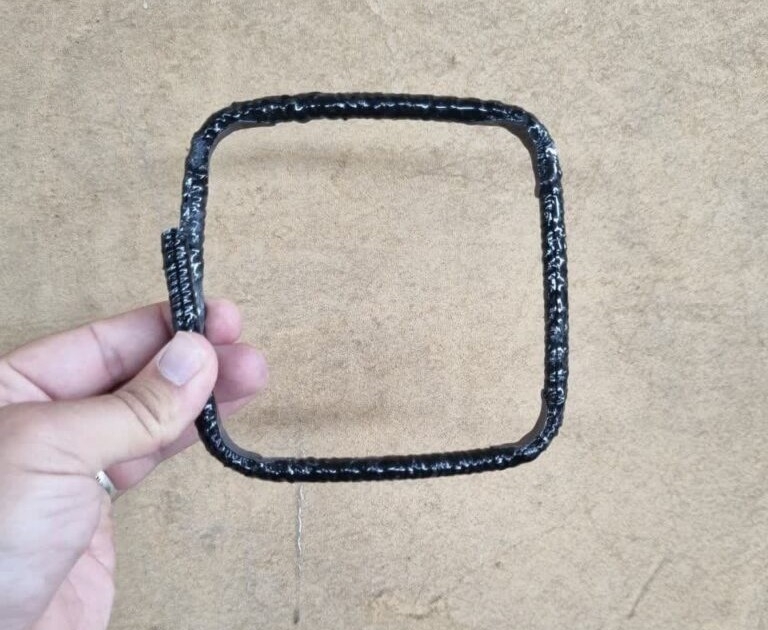Composite bends, stirrups and rebar bridges are produced according to the listofer provided by the customer in the factory before baking and are sent to the project site.
Composite bends, stirrups, and rebar bridges are produced in all sizes and dimensions: from 3 mm to 30 mm in diameter and from 20 cm to 60 cm or more in size.
Unlike steel rebars, which can be bent on-site, because composite rebars are made of glass fibers and epoxy resin, and epoxy resin is also thermosetting, it is not possible to produce bent composite rebars after curing.
If bent or applying too much pressure they will bend to some extent, but after removing the pressure and bending, the rebar will return to its longitudinal shape due to its elasticity and springiness.
Properties
- • Anti-corrosion
- • More tensile strength than steel
- • Faster operation and easier cutting
- • Anti-electromagnetic
- • 8 times lighter than steel
- • Non-conductive against electricity and heat
The security and useful life of buildings will not be able to be accurately predicted due to environmental problems in humid and coastal areas. One of its factors is the corrosion of steel bars.
Corrosion of steel bars causes cracking and flaking of concrete, reducing performance and significantly increasing reconstruction costs. On the other hand, with the increase in environmental pollution and carbon dioxide and chloride ions, the protective properties of concrete decrease.
The appropriate solution to manage corrosion and reduce the slippage of steel rebar in concrete –both of which cause the concrete to break and honeycomb and as a result the destruction of the structure– is to use composite rebars and composite bends.
In many projects located in humid and corrosive areas, the most important factors include increasing the structure’s life, reducing maintenance and reconstruction costs, further retrofitting, and removing corrosive factors.
One of the best and most cost-effective solutions is to replace longitudinal steel bars and steel bends and stirrups with composite bends and bars and stirrups. Due to these polymer products’ anti-corrosion and anti-electromagnetism properties, many problems in corrosive areas can be solved.
It should be mentioned that composite rebars, which are completely non-conductive and anti-electromagnetic, can be used in projects such as hospital MRI rooms or foundations under electric arc furnaces of steel manufacturing companies or in general any project that requires non-conductivity of the surrounding environment.
Application of Composite Bends and Stirrups:
- – Sewage facilities such as treatment plants, clarifiers, manholes, grease traps
- – Channels and concrete pipes for directing sewage and industrial effluents and chemicals
- – Concrete structures of docks and marine structures
- – Structures adjacent to MRI machines in healthcare centers
- – Reinforcement on the deck (deck bridges in cold areas and reinforced concrete infrastructures)
- – Struts in soil and water
- – New Jersey precast concrete roadblocks
- – Precast concrete buildings
- – Columns and prefabricated foundation for walling and landscaping
- – Concrete dams
- Breakwaters and marine platforms
- – Prefabricated concrete parts
- – Foundation
- – Pools and concrete tanks
- – Strengthening the coastlines
- – Retaining walls





